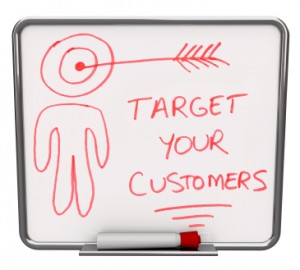Perhaps the most important rule in life is to “know thyself”…well, in marketing it might be trumped by how well you know your prospective buyers. This might be the most important part of building an awesome positioning strategy that truly speaks to your buyers, and we know that when marketing plans are developed around the needs and desires  of your buyers you’ve got a strategy that will make everyone sit up and take notice. One notion that should be disabused from the start is that a buyer persona is just fine if it’s only skin deep. While it’s important to understand the basic demographics of your buyers, a truly effective buyer persona digs deep and cuts to the heart of what compels someone to make the ultimate decision to take the action you desire, whether that be filling out a form, downloading a resource, or the best outcome of all…making a purchase. Below are some simple tips that can help you get started in building effective buyer personas right now!
of your buyers you’ve got a strategy that will make everyone sit up and take notice. One notion that should be disabused from the start is that a buyer persona is just fine if it’s only skin deep. While it’s important to understand the basic demographics of your buyers, a truly effective buyer persona digs deep and cuts to the heart of what compels someone to make the ultimate decision to take the action you desire, whether that be filling out a form, downloading a resource, or the best outcome of all…making a purchase. Below are some simple tips that can help you get started in building effective buyer personas right now!
“A buyer persona is a detailed profile of an example buyer that represents the real audience – an archetype of the target buyer. Marketers can use buyer personas to clarify the goals, concerns, preferences and decision process that are most relevant to their customers. Imagine how effective marketers could be if we would all stop making stuff up and start aligning our messages and programs with the way real people actually think.” Adele Revella from her Buyer Persona Blog.
Start with the basics:
Start with the low-hanging fruit. At the very least you should have a fairly easy time getting a handle on the basic demographics of your potential buyers. Basic facts like age, gender, ethnicity, education, geography, and occupation will give you a head start in developing buyer personas that will truly make a difference in your marketing plans.
Schedule some interviews:
Every expert on the subject of buyer personas including David Meerman Scott and Adele Revella stress that the most important step in developing an effective buyer persona is to conduct interviews with your buyers and potential buyers. For each profile you want to learn as much as possible. What are their goals and aspirations? What are their problems? What keeps them up at night? What kind of art do they enjoy? What media do they rely on for answers to their problems? What tools and resources do they use to excel at their jobs? What social networking sites do they belong to? What words and phrases do they use to describe your product? I’m sure you can come up with more, think outside the box and don’t be afraid to probe (without being creepy, please).
Segment your personas:
The classic question always seems to be…well, how many buyer personas should we have? Unfortunately there is no definitive answer to this question. You need to understand all of the key people that impact the decision process and develop a persona for each. Currently I work in a very competitive B2B technology environment and in our situation we broke our personas down into three groups…decision makers, key influencers, and champions. This takes careful deliberation when you consider that the ultimate goal is to develop marketing messages that communicate with each group individually when possible. In his bestselling book The New Rules of Marketing & PR marketing guru David Meerman Scott discusses how a college might separate their buyer personas into parents who are helping their kids find the right school, different types of high school students (athletes, art students, etc.), and alumni they would like to solicit donations from.
Assign an image:
It helps to find an image or two that you feel captures the essence of that particular persona, obviously you’ll want to use your demographic data for this one. Having a visual representation for each buyer persona can really help when planning communication strategies that speak to the challenges and aspirations of your potential customers. Find images that closely resemble not just the demographic attributes, but also the psychographic ones as well. For instance, we market to owners and administrators of small healthcare offices that are not technically savvy, and can appear harried and unorganized. When it came time to find images that closely resembled our most likely buyers we found photos that match that description.
Write a short bio:
Scott also suggests writing a short, fictional biography for your different buyer personas that might help flesh out their stories a bit more. Touch on the reasons they might have for seeking out your product or service. What is motivating them? What are the market trends that would compel them to buy from you? How would they speak about you in everyday conversation with their family and friends? Have fun with it, let your imagination run wild and don’t worry about being silly.
Resources:
Adele Revella: www.buyerpersona.com
David Meerman Scott: www.webinknow.com
The New Rules of PR and Marketing by David Meerman Scott
What other resources can you share about building effective buyer personas? Leave a comment!
